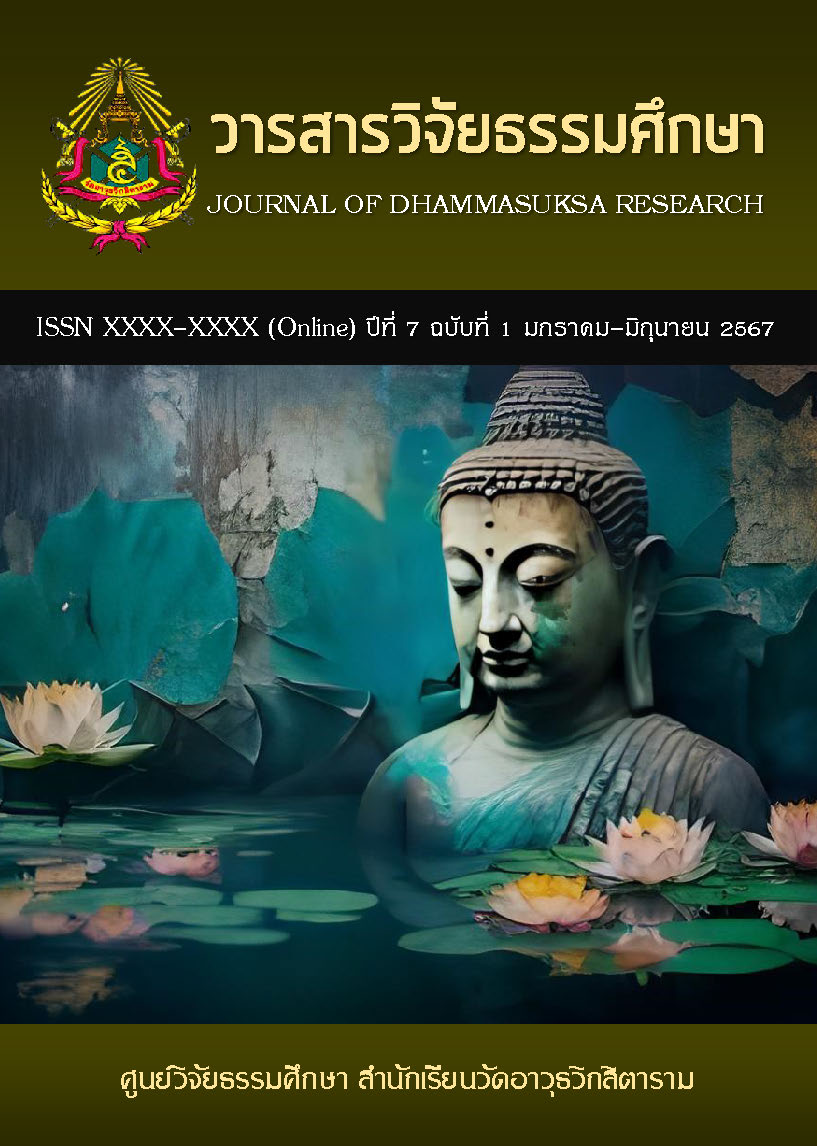การทำดีตามหลักหน้าที่นิยม
คำสำคัญ:
การทำดี, ประโยชน์นิยม, การกระทำที่ถูกต้องบทคัดย่อ
บทความวิจัยนี้มีวัตถุประสงค์เพื่อศึกษาการทำดีตามหลักหน้าที่นิยม วิธีการศึกษาเป็นแบบเชิงคุณภาพ โดยศึกษาค้นคว้าและรวบรวมข้อมูลจากเอกสารและงานวิจัยที่เกี่ยวข้อง ผลการวิจัยพบว่า เหตุผลที่ทำให้เราทำตามหน้าที่คือ เหตุผลเชิงปฏิบัติ ซึ่งมิใช่เป็นตัวที่นำมนุษย์ไปสู่ประโยชน์สุข แต่เป็นตัวสร้างเจตจำนงที่ดีในตัวเอง การทำดีตามหลักหน้าที่นิยมสำหรับคานท์มีเพียงสิ่งเดียวที่ดีโดยปราศจากเงื่อนไข คือ การมีเจตนาดี แต่คานท์ก็ไม่ได้กล่าวว่า ผลไม่สามารถนำมาพิจารณาได้ หรือผลเป็นเรื่องไม่สำคัญ แต่คานท์กล่าวว่าคุณสมบัติทางศีลธรรมของการกระทำจะต้องไม่อาศัยผลเป็นเครื่องกำหนด เพราะเงื่อนไขทางศีลธรรมที่จำเป็นต่อชีวิตคือเจตนา ดังนั้นจึงสรุปได้ว่า ความถูกต้องของคานท์อยู่ที่เจตนา ถ้ามีเจตนาดี ไม่ว่าผลจะเกิดขึ้นอย่างไรก็ต้องนับว่าเป็นการกระทำที่ถูกต้อง
เอกสารอ้างอิง
กีรติ บุญเจือ. (2551). คู่มือจริยศาสตร์ตามหลักวิชาการสากล. กรุงเทพฯ : เชน ปริ้นติ้ง.
เทพวรรณ์ เตียมไธสง และ พระครูภาวนาโพธิคุณ (2564). “การบูรณาการแนวคิดจริยศาสตร์เชิงหน้าที่ในทัศนะ ของอิมมานเอล คานท์กับจริยศาสตร์ธุรกิจ”. Journal of Modern Learning Development. ปีที่ 6. ฉบับที่ 1. (มกราคม-กุมภาพันธ์): 367-379.
พระทศเทพ ทสธมฺโม (วณิชาติ) และจักรพรรณ วงศ์พรพวัณ. (2562). “จริยศาสตร์ของค้านท์: การทำหน้าที่ระหว่างบุพการีและกตัญญูกตเวที”. วารสารวิชาการธรรมทรรศน์. ปีที่ 19. ฉบับที่ 3. (กรกฎาคม-กันยายน).
Kant, I. (1785). Foundations of the metaphysics of morals. translated by Lewis White Beck. New York: Macmillan Publishing Company.
______. (1964). Groundwork for the Metaphysics of Morals. translated by H.J. Paton. New York: Harper & Row, Publishers, Inc.
______. (1969). The moral law. translated by H.J. Paton. London: Hutchinson University Library.
Titius, Harold H. (1966). Ethics for Today. Ohio: Denison University.
ไฟล์ประกอบ
เผยแพร่แล้ว
รูปแบบการอ้างอิง
ฉบับ
ประเภทบทความ
หมวดหมู่
สัญญาอนุญาต
ลิขสิทธิ์ (c) 2024 วารสารวิจัยธรรมศึกษา

อนุญาตภายใต้เงื่อนไข Creative Commons Attribution-NonCommercial-NoDerivatives 4.0 International License.



